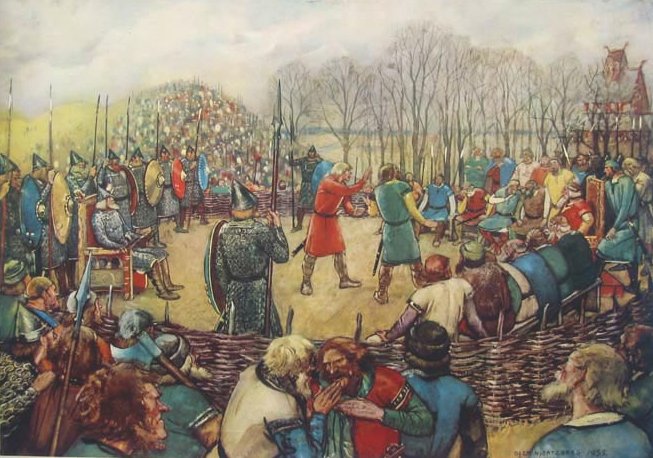Viking Law And Order Was Based On The Thing System
A. Sutherland - AncientPages.com - It's an ancient fact that Vikings were fierce warriors, and they did plunder a lot. However, what could be more well-known is that even though there was no written law and only rune writing existed at the time; the ancient Viking society had a sophisticated government and law system.
A Germanic Assembly, by Charles Rochussen. Source - Public Domain
In the pre-Christian clan-culture of Scandinavia, the members of a clan were obliged to avenge injuries against their dead and mutilated relatives. As the result, those involved were frequently involved in a prolonged and unpleasant dispute or quarrel. This kind of action was necessary for solving a problem.
Viking law and order was based on the so-called thing system. People believed it was better than having disputes settled by duel or family feuds that could lead to unnecessary injuries. In the Viking society, all free men, women and disabled people were allowed to attend its meetings.had the right to conduct revenge killings. You could kill somebody in public without suffering severe consequences because you were honest, did not hide your actions, and allowed others to react.
It was essential to take responsibility for the murder, not run away, and pay the fines. The same applied to killing somebody in a fight.
Traditionally, feuding was often seen as the most common form of conflict resolution used in Viking society. Tribal feuds often contributed with reducing and avoiding social disorder in North-Germanic cultures. Additionally, they played an significant role as forums for power display, marriage alliances, honor isues, and inheritance settlements.
Administrative organization in Sweden's thing sites (similar to those in Norway) began to change in the late tenth and eleventh century. It was time of the power struggle caused byt the rising Christian royal power in the process of establishing itself and the old, local magnate families still attempting to maintain power.
A place for an assembly - a thingstead. Illustration by Hjortzberg, O. 1932 - Norstedt und Söner/Westermann/Esselte/Stockmann, P., Stockholm - Public Domain
Runic inscriptions at thing sites are considered the most valuable source of our knowledge about the battle for power between the king and local magnates that took place. Important power statements were recorded in stone.
Swedish assembly sites had a number of specific features that usually included large natural or oftan man-made mounds, often burial mounds, rune-stones, and communication routes - crossings between roads by land (or water) to allow greater gatherings.
Mainly in Scandinavia, large runestones decorated with inscriptions informed about a local family's attempt to claim supremacy are common features of thing sites.
The Thing Took Place At Regular Intervals
The governing assembly legislated, elected chieftains and kings, and judged. It was made according to the law, which was memorized and recited by the "lawspeaker" (the judge). The thing's negotiations were presided over by the lawspeaker and the chieftain or the king.
While the things were not democratic assemblies in the modern sense of an elected body, they were built around ideas of neutrality and representation, effectively representing the interests of largernumbers of people. In Norway, the thing was a space where freemen and elected officials met and discussed matters of collective interest, such as taxation.
Some scholars say that the things were dominated by the most influential members of the community, the prominent heads of clans and representatives of wealthy families, other scholars describe how every free man could put forward his case and share his opinions.
These things also served as courts of law, and if one of the smaller things could not reach agreement, the matter at hand would be brought to one of the bigger things, which included larger areas
Towards the end of the Viking age, royal power became centralized and the kings began to strengthen power and control over the assemblies. As a result, things lost most of their political role and began function as courts in the later Middle Ages.
 Germanic thing, drawn after the depiction in a relief of the Column of Marcus Aurelius (193 CE). Image upploader: Wolpertinger - PublicDomain
Germanic thing, drawn after the depiction in a relief of the Column of Marcus Aurelius (193 CE). Image upploader: Wolpertinger - PublicDomain
In late medieval times, the Thing was made up of twelve representatives for the farmers, free-holders or tenants.
A Thing was the governing assembly made up of the free people of the community. Each community had its own independent Thing where all free Vikings could gather to make law, resolve disputes and make decisions. The meeting place was called a thingstead.
The Thing had meetings that could sometimes last several days. Each Thing had a law speaker who would recite the law from memory. Although all free men of the community were entitled to voice their opinion, it was still up to the law speaker and the local chieftain to judge and settle the cases of dispute they heard.
To be summoned to the Thing was regarded as a very hostile act; therefore, the parties always tried to reach an agreement.
Those who faced a trial at the Thing knew the verdict could devastate their lives. People found guilty were either fined, declared semi-outlaw, or entirely outlawed. To be an outlaw was a dreadful punishment for a Viking, as it resulted in being banished from society and having one's property confiscated.
A person declared an outlaw by the Thing could never expect to receive help from anyone. Isolated from society, outlaws faced loneliness and could be killed at any time by anyone. The only way to survive with dignity was to escape abroad or settle in a different location where they were not known.
According to the rules and regulations of the Thing, all free men, including the kings and chieftains, must respect the law. The Thing was considered a democratic system, and everyone except enslaved people and exiles was considered a citizen.
Written by – A. Sutherland - AncientPages.com Senior Staff Writer
Updated on Aug 20, 2023
Copyright © AncientPages.com All rights reserved. This material may not be published, broadcast, rewritten or redistributed in whole or part without the express written permission of AncientPages.com
Expand for referencesMore From Ancient Pages
-
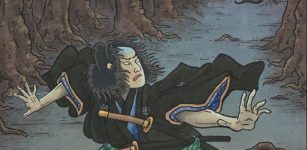 Yōkai: Mysterious Interdimensional Force With Odd Abilities In Japanese Mythology
Featured Stories | May 15, 2017
Yōkai: Mysterious Interdimensional Force With Odd Abilities In Japanese Mythology
Featured Stories | May 15, 2017 -
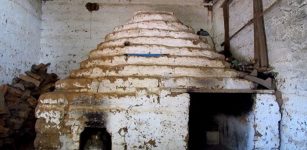 Ancient Mayans Used Saunas For Healing Purposes
Ancient History Facts | May 12, 2016
Ancient Mayans Used Saunas For Healing Purposes
Ancient History Facts | May 12, 2016 -
 Queen Elizabeth I Was Identified As Author Of Tacitus’s Annales Translation
News | Dec 1, 2019
Queen Elizabeth I Was Identified As Author Of Tacitus’s Annales Translation
News | Dec 1, 2019 -
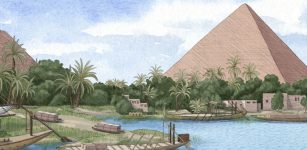 Evidence The Khufu Channel Aided The Construction Of The Giza Pyramids Found – Scientists Say
Archaeology | Aug 31, 2022
Evidence The Khufu Channel Aided The Construction Of The Giza Pyramids Found – Scientists Say
Archaeology | Aug 31, 2022 -
 Ostracism: Political Practice In Ancient Athens
Ancient History Facts | May 7, 2019
Ostracism: Political Practice In Ancient Athens
Ancient History Facts | May 7, 2019 -
 Paris Catacombs: Huge Underground Labyrinth Full Of Secrets
Featured Stories | Jan 3, 2016
Paris Catacombs: Huge Underground Labyrinth Full Of Secrets
Featured Stories | Jan 3, 2016 -
 Rare 2,700-Year-Old Seal Of Biblical King Jeroboam II’s Servant Confirmed Authentic
Artifacts | Jan 18, 2021
Rare 2,700-Year-Old Seal Of Biblical King Jeroboam II’s Servant Confirmed Authentic
Artifacts | Jan 18, 2021 -
 Ancient Ritual Bundle From Bolivia Reveals Multiple Psychotropic Plants
Archaeology | May 7, 2019
Ancient Ritual Bundle From Bolivia Reveals Multiple Psychotropic Plants
Archaeology | May 7, 2019 -
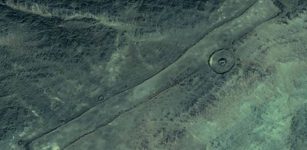 Mysterious Mustatils- Giant 7,000-Year-Old Stone Monuments In Saudi Arabia Baffle Scientists
Archaeology | Aug 19, 2020
Mysterious Mustatils- Giant 7,000-Year-Old Stone Monuments In Saudi Arabia Baffle Scientists
Archaeology | Aug 19, 2020 -
 Vikings Brewed Beer With Heated Stones – Old Tradition Popular In Germany, Finland And Baltic States
Archaeology | Dec 14, 2017
Vikings Brewed Beer With Heated Stones – Old Tradition Popular In Germany, Finland And Baltic States
Archaeology | Dec 14, 2017 -
 Count Dracula: His Letters Helped Researchers Cast New Light On Health Of Legendary Figure
Historical Figures | Aug 17, 2023
Count Dracula: His Letters Helped Researchers Cast New Light On Health Of Legendary Figure
Historical Figures | Aug 17, 2023 -
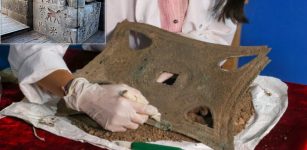 Ornamental Bronze Wall Plate Unearthed In Ayanis Castle Built By Urartian King Rusa II
Archaeology | Sep 13, 2022
Ornamental Bronze Wall Plate Unearthed In Ayanis Castle Built By Urartian King Rusa II
Archaeology | Sep 13, 2022 -
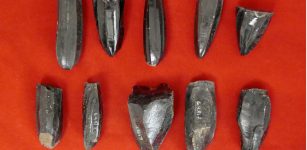 Mayas Utilized Market-Based Economics – New Study
Archaeology | Jan 6, 2023
Mayas Utilized Market-Based Economics – New Study
Archaeology | Jan 6, 2023 -
 Hua Mulan – Chinese Brave Female Warrior In Disguise Who Fought Instead Of Her Old Father
Featured Stories | May 23, 2019
Hua Mulan – Chinese Brave Female Warrior In Disguise Who Fought Instead Of Her Old Father
Featured Stories | May 23, 2019 -
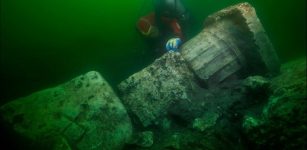 New Discoveries In Underwater Excavations Of Sunken Cities Of Canopus and Heracleion
Archaeology | Jul 29, 2019
New Discoveries In Underwater Excavations Of Sunken Cities Of Canopus and Heracleion
Archaeology | Jul 29, 2019 -
 Stunning Reconstructions Shows What Colchester Looked Like During Roman Times
News | Jul 2, 2022
Stunning Reconstructions Shows What Colchester Looked Like During Roman Times
News | Jul 2, 2022 -
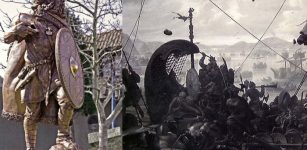 Kylfings – Unknown Warriors Mentioned On Norse Runes – Were They Members Of The Varangian Guard?
Civilizations | Mar 15, 2018
Kylfings – Unknown Warriors Mentioned On Norse Runes – Were They Members Of The Varangian Guard?
Civilizations | Mar 15, 2018 -
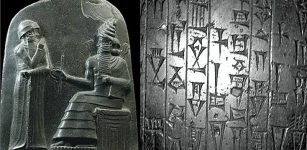 Hammurabi: The Great King Of Babylon And His Laws
Civilizations | Oct 21, 2016
Hammurabi: The Great King Of Babylon And His Laws
Civilizations | Oct 21, 2016 -
 What Is The Codex Sinaiticus And What Does It Mean?
Ancient History Facts | Feb 5, 2019
What Is The Codex Sinaiticus And What Does It Mean?
Ancient History Facts | Feb 5, 2019 -
 100,000-Year-Old Case Of Deafness Discovered In Fossilized Skull Of Hunter-Gatherer
Archaeology | Jul 21, 2022
100,000-Year-Old Case Of Deafness Discovered In Fossilized Skull Of Hunter-Gatherer
Archaeology | Jul 21, 2022


